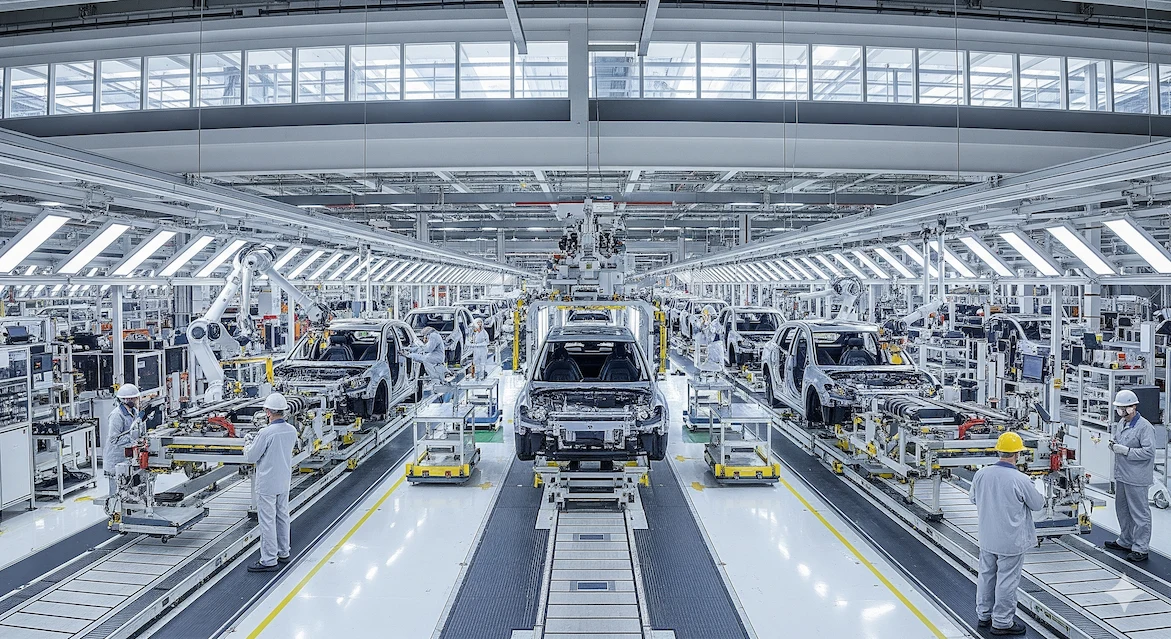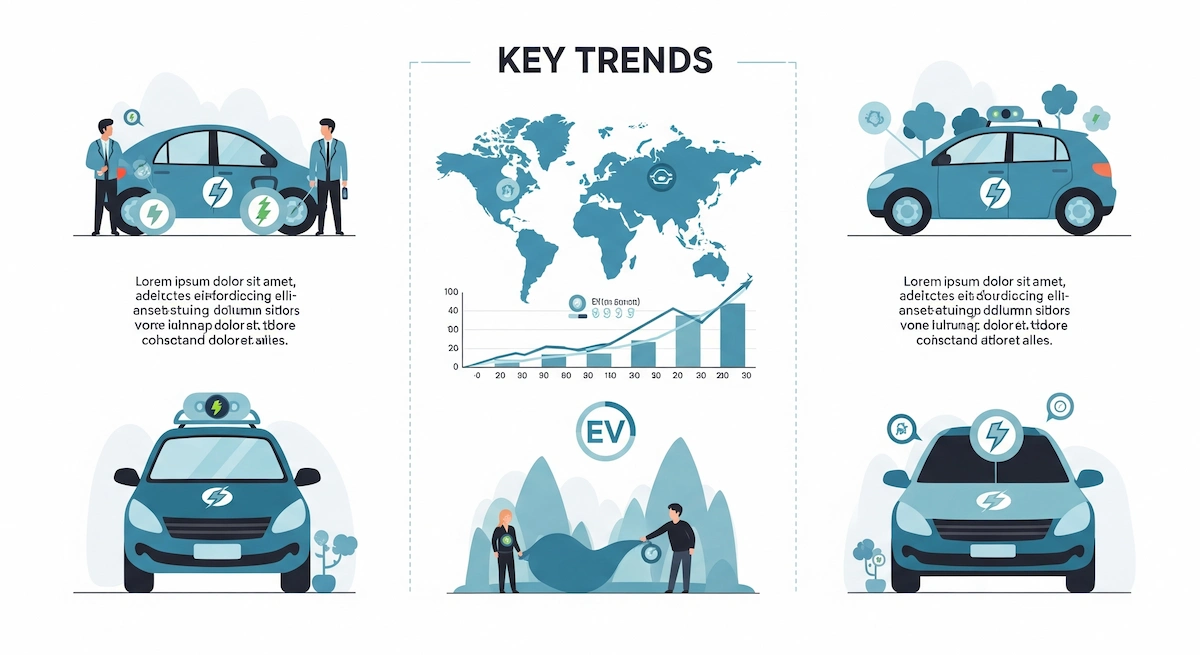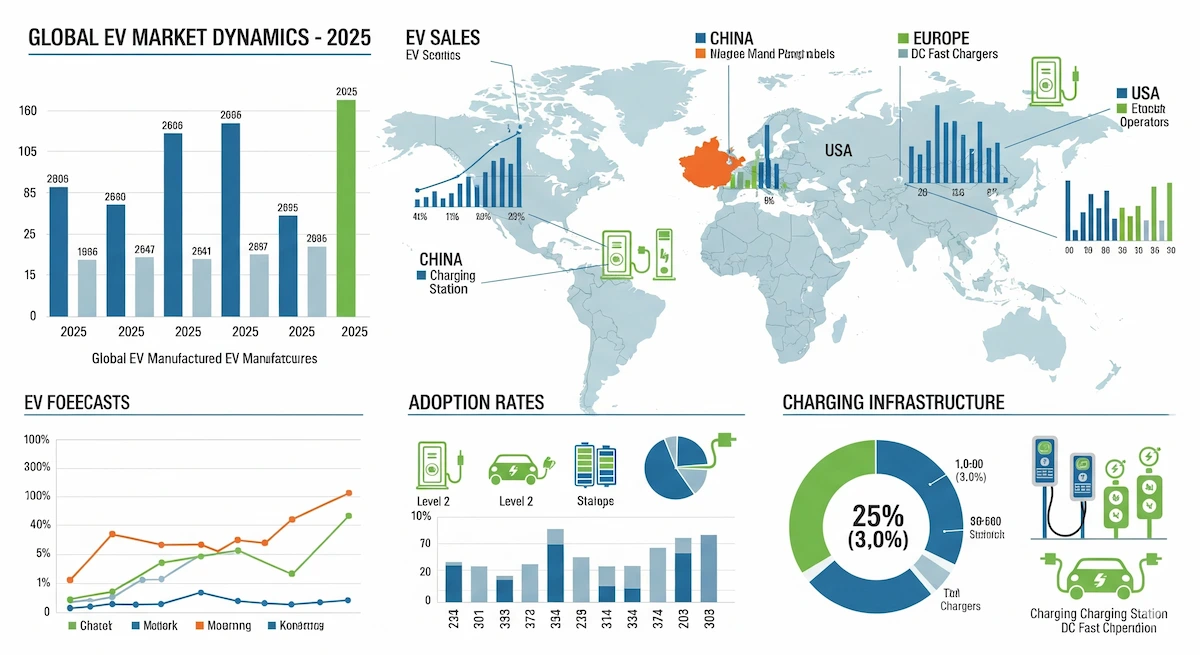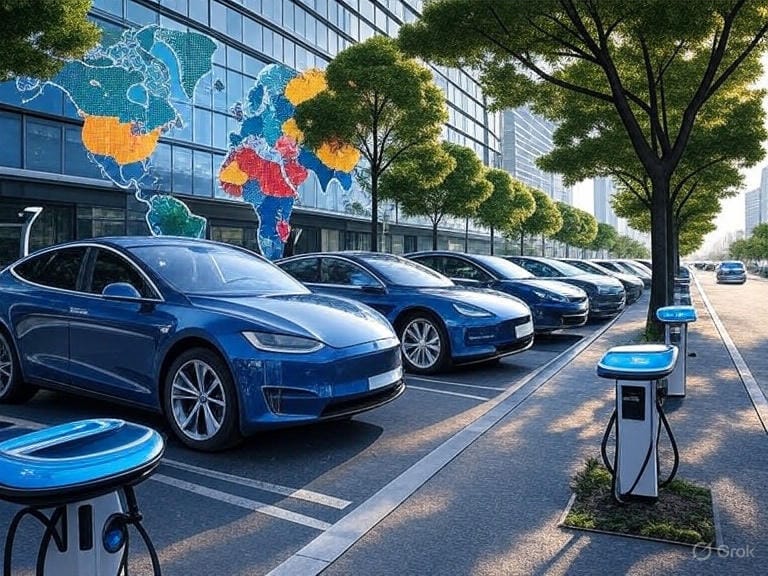GloNews10

The electric vehicle (EV) industry is experiencing a transformative surge in 2025, driven by innovative EV trends, expanding market dynamics, and a global push for sustainable mobility. With the global EV market valued at $755 billion in 2024 and projected to reach $4,360 billion by 2033 at a CAGR of 21.5%, electric vehicles are reshaping transportation.
This article dives into the key trends, market insights, and future outlook for electric vehicles growth, optimized for readers seeking a comprehensive, user-friendly guide to this dynamic sector.
The electrical vehicles growth trajectory is remarkable, with global EV sales reaching new heights. In 2024, China led with 7.6 million EVs sold between January and August 2025, though growth slowed slightly in July due to a strong prior year.
India’s EV market share for passenger cars hit 4.1% in May 2025, up from 2.6% in 2024, driven by players like Tata Motors. Europe saw robust growth, with Germany reporting a 45% increase and the UK a 31% rise in EV sales. North America, however, grew modestly at 6%, with 1.3 million units sold.
The vehicle electrification market is projected to grow from $56.94 billion in 2025 to $91.30 billion by 2032 at a CAGR of 7.0%. Electric powertrains, a critical component of EVs, are expected to surge from $110 billion in 2024 to $463 billion by 2034, signaling a seismic shift in the automotive landscape.

Battery technology is at the heart of electric vehicles growth. In 2025, advancements like solid-state batteries from companies like QuantumScape are enhancing range, safety, and charging speed. Lithium iron phosphate (LFP) batteries are gaining popularity for their affordability and durability, especially in China.
These innovations are lowering EV costs, making sustainable mobility more accessible. For instance, vehicle-to-grid (V2G) technology allows EVs to supply up to 10kW of backup power, integrating smart energy solutions for a seamless user experience.
Government incentives are a cornerstone of electric vehicles growth. In 2025, subsidies and tax credits are accelerating adoption globally. Europe’s stringent emissions regulations have driven a 45% sales spike in Germany. In India, government support has led to a 21% rise in electric two-wheeler sales and a 57% increase in three-wheeler sales in 2024-25.
However, uncertainties, such as potential U.S. tax credit reductions, could challenge affordability, though state-level incentives may bridge the gap.
Expanding charging networks is critical to electric vehicles growth. In 2025, global charging infrastructure is improving, with innovations like ultra-fast chargers delivering full charges in under 15 minutes.
India’s cities, like Bhubaneswar and Cuttack, are seeing rapid charger deployment, supporting EV adoption. Wireless charging is also emerging, reducing range anxiety and enhancing sustainable mobility for consumers.

The Asia Pacific region dominates electric vehicles growth, holding a 46.5% market share in 2024. China’s robust supply chain and adoption of advanced components like electric compressors drive its leadership. India’s EV market is among the fastest-growing, with over 1 million units sold in 2024-25, led by two-wheelers from Bajaj and Ola and passenger EVs from Tata Motors.
Europe’s electric vehicles growth is fueled by regulatory support and consumer demand. Germany and the UK have seen significant sales increases, though Tesla’s 40% sales drop in Europe in July 2025 highlights competitive pressures. The focus on sustainable mobility is driving innovation in electrified components like electric power steering (EPS).
North America’s electric vehicles growth lags at 6% in 2025, hindered by infrastructure gaps and affordability concerns. Innovations like BorgWarner’s coolant heaters for SUVs are advancing the market, and the used EV market is poised for record highs, offering cost-effective options for sustainable mobility.

Electric vehicles growth is intertwined with connectivity. EVs in 2025 feature vehicle-to-vehicle (V2V) communication, enhancing safety through real-time data sharing. AI-driven dashboards and autonomous driving capabilities are transforming EVs into smart, user-friendly platforms, aligning with the demand for sustainable mobility.
Beyond batteries, electric vehicles growth includes components like electric coolant pumps and vacuum pumps, projected to reach $2.80 billion by 2032 at a CAGR of 7.2%. These components enhance efficiency and safety, particularly in hybrid and premium vehicles, supporting sustainable mobility.
Chinese automakers are reshaping electric vehicles growth with competitive pricing and battery innovations. However, Western tariffs on Chinese EVs could impact their global market share, prompting strategic policy responses.
Sustainability is central to electric vehicles growth. In 2025, manufacturers are prioritizing recyclable materials and renewable energy in production. Battery recycling and repurposing are gaining traction, reducing the environmental footprint of EVs and reinforcing sustainable mobility.
Despite its momentum, electric vehicles growth faces hurdles:
Looking ahead, electric vehicles growth is poised for acceleration through 2033:
BloombergNEF predicts passenger EV sales will hit 30 million by 2027 and 73 million by 2040, driven by consumer demand and cost declines. Achieving net-zero goals will require sustained policy support and infrastructure investment.
Electric vehicles growth in 2025 marks a pivotal moment for sustainable mobility. With EV trends like battery innovations, connected vehicles, and expanding markets, EVs are transforming transportation. Challenges like infrastructure and costs persist, but the industry’s trajectory is clear: electric vehicles are driving the future. Stay informed with trusted sources like BloombergNEF and MarketsandMarkets for the latest EV insights.